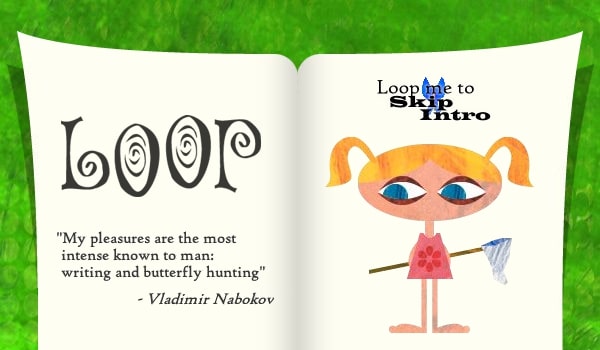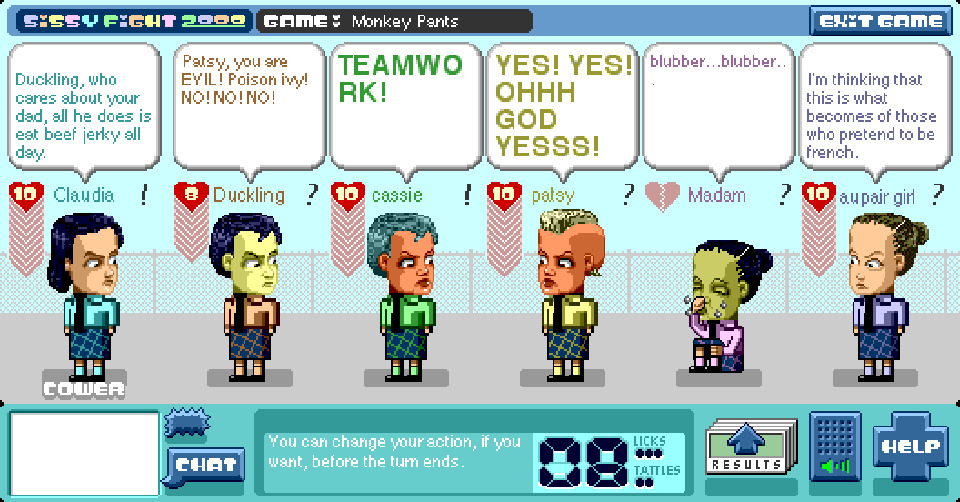What's Their Game?
The NFT market has spawned a new cultural form that has elements of games but not their rules.


The video game world was awash with money in the early 2000s. New investors had flooded the market, chasing exponentially profitable blockbusters made by non-unionized hobbyists working with budgets less than the cost of craft services for a Harry Potter movie—take Grand Theft Auto III (2001), made for 5 million USD, which grossed over 250 million USD in its first twelve months; or Guitar Hero (2005), which cost 1 million USD and generated 45 million USD in its first three months, followed by two rapid-fire sequels that would push the franchise’s total earnings over 1 billion USD in just two years. The dizzying swirl of money gave everything a revolutionary tint, as if incremental achievements in consumer tech like flip phones, flatscreen TVs, and Wii remotes could secretly be as consequential as the lunar landing or Nixon’s trip to China.
Many game designers responded by issuing manifestos, trying to compete against institutional investors with their own alternative—yet equally powerful—vision for the future of games. In 2000, Greg Costikyan published the Scratchware Manifesto, exhorting developers to avoid corporate backers entirely and instead work in small teams on creatively audacious games. “What do you need to create a game?” he wrote. “Two people and a copy of Code Warrior” plus “food stamps and enough scratch to pay the electricity bill.” In 2003, Paolo Pedercini built on that idea with the Molleindustria Manifesto, encouraging designers to forget about profitability and instead focus on socially and politically conscious games showcasing the “emancipatory potential of play.” In 2006, Tale of Tales published the Realtime Art Manifesto, arguing that designers should forgo games entirely and instead use 3D rendering tools to make new kinds of digital art, claiming that rules and competition inhibited playfulness and narrowed the emotional and intellectual scope of a work. In 2010, Jason Rohrer released the New Gamist Manifesto, which argued that games were less an art than a language that players helped each other learn in halting turns, like second-year Spanish students asking each other how many brothers and sisters they have.

While most came and went to little effect, one manifesto had a peculiar prescience that makes it worth revisiting. It was focused less on what would become of games in the future, and more on what kind of a future would emerge from a world where games had become the predominant creative form, surpassing film, television, song, and even the written word. Published in 2013 by designer and academic Eric Zimmerman, the Manifesto for a Ludic Century argued that the twenty-first century would be defined by games and games literacy. “The ways that we work and communicate, research and learn, socialize and romance, conduct our finances and communicate with our governments are all intimately intertwined with complex systems of information—in a way that could not have existed a few decades ago,” Zimmerman wrote. “For such a systemic society, games make a natural fit.”
The Manifesto for a Ludic Century argued that the twenty-first century would be defined by games and games literacy.
Provocatively, Zimmerman argued that games—particularly those like Chess and Go—had in fact “created” the modern computer: they were not just pastimes but “machines for creating and storing numerical states.” As the widespread adoption of computers hastened the shift away from industrialism toward a new kind of information economy, games had naturally emerged as a vital interface to help people make sense of the new world and all of its interlocking systems. “How does the price of gas in California affect the politics of the Middle East affect the Amazon ecosystem?” Zimmerman wrote. “These problems force us to understand how the parts of a system fit together to create a complex whole with emergent effects. They require playful, innovative, trans-disciplinary thinking in which systems can be analyzed, redesigned, and transformed into something new.” A generation raised on Missile Command and Mario (both released in 1980) would thus be ideally suited to tackling those problems, thinking more like game designers than administrators, while rewriting the rules of everyday reality to be both more productive and playful—a new epoch we would soon learn to call the ludic century.

Zimmerman was an unusual source for such a sweeping document. He began his career in the mid-nineties making kid-friendly CD-ROM games for the home computer, before moving on to licensed tie-in games for LEGO and the HBO television series Carnivàle (2003–05). He was most famous for co-developing Diner Dash, a simple 2D game first released in 2003 about an overworked server in a restaurant, which became just the kind of viral blockbuster investors dreamed of. Yet he alternated his commercial work with more experimental art games like Sissyfight 2000 (2000), LOOP (2001), and Sixteen Tons, an interactive installation created with architect Nathalie Pozzi that appeared in Kai Lin Art Gallery in Atlanta in 2010.
Ironically, Zimmerman’s biggest critics were other game designers, who seemed reluctant to think about what kinds of influence their work was having on the world at large. Ben Johnson described the manifesto as “foofaraw,” and “less a manifesto than a Salvation Army sermon.” A critique on the trade site Gamasutra called it “empty techno-babble.” Abe Stein, from the MIT Game Lab, argued that its focus on digital systems was innately exclusionary and self-limiting. “Maybe the truth is that while information technology has impacted how privileged cultures with access think, talk, write about, and play games, that boulder of a paradigm shift is barely a ripple to those outside that world.” Designer and author Ian Bogost described the manifesto as a curiosity and wondered if perhaps the larger point was about the way system-level thinking could lead someone to the autocratic temptation of dictate-making. “[W]ould a truly ludic century be a century of manifestos?” he wrote. “Of declaring simple principles rather than embracing systems?” (Even Zimmerman himself would later join his critics in poking at the manifesto’s flaws, admitting it was “grand” and a “ridiculous kind of prediction to make.”)
More than ten years later, it seems that many of Zimmerman’s predictions have held up better than the naysaying of his critics. Games like Roblox (2006), Minecraft (2009), Dreams (2020), and the Super Mario Maker series (2014–) have encouraged players to see themselves as designers, taking pleasure by creating new experiences for others. In 2012, Steam introduced the Workshop, a new part of its digital storefront that would let players distribute their own custom modifications to other developers’ games. And in 2013, the company announced its Early Access program, allowing small developers to sell unfinished games, which encouraged players to see themselves as volunteer product testers. This has created a culture of first drafts, half-formed software that nevertheless has a transfixing power because the imperfections and design flaws give players a sense of purpose and productive participation.
Indeed, many of today’s most popular games are explicitly designed like general productivity systems. The first-person simulator genre has grown dramatically, with players seeking pleasure from mundane fantasies about replacing corroded sparkplugs (Car Mechanic Simulator, 2014) on a misfiring car, remodeling a rundown house and selling it for a profit (House Flipper, 2018), powerwashing a cruddy deck (PowerWash Simulator, 2021), or driving a big rig filled with retail patio furniture across the Schengen Area (Euro Truck Simulator, 2008). More conventional games like Fortnite (2017), Destiny 2 (2017), Call of Duty: Warzone (2020), NBA 2K (1999), and FIFA/EA Sports FC (1993/2023) have mostly abandoned the pretense of narrative development and are instead structured around endless loops of currency accumulation.

In a similar way, people are encouraged to see their own working lives not as careers but abstract productivity systems, which they’re encouraged to optimize in hopes of escaping the endless cycle of insecurity about what the next week’s paycheck will look like. Uber drivers chase fractional improvements to their ratings hoping that will translate into the system assigning them more rides in the future. On DoorDash, people are lured into working weekends and off-hours with the promise of cash bonuses for making a set number of deliveries during a certain period. LinkedIn users trade endorsement badges to help each other seem employable.
Online shopping is underwritten with game-like bonuses and modifiers, like cash back rewards or frequent flier miles, which makes it more likely a person will buy something they don’t really need or want because it will get them closer to some other goal. Healthcare apps promise users rewards while tracking their exercise routines and daily step counts, and car insurance companies promise customers rebates and lowered rates in exchange for using apps that log driving habits, including cornering speed and acceleration. Even gambling has been further gamified through the creation of loyalty reward cards that allow players to track their activity across casinos, accruing points for different tiers of fringe benefits.
It’s worth asking why, even if Zimmerman got the label right, the utopian outcomes he predicted would come from a pervasive games culture feel even more distant today.
In aggregate, it’s hard to imagine a better label for these developments than the “ludic century.” Yet it’s worth asking why, even if Zimmerman got the label right, the utopian outcomes he predicted would come from a pervasive games culture feel even more distant today. Indeed, it often seems as if the prevalence of game-like approaches to organizing the world have only intensified conflict and social fragmentation, something that seems to have stemmed from what Zimmerman gets wrong about the past rather than the future.

Like many designers and academics, Zimmerman saw the emergence of video games as a break from film and television, the forms of mass media that had been dominant in the twentieth century. In games, he argued in his manifesto, players don’t watch a series of “linear, non-interactive” events unfold, they make a series of events happen through their own actions. This argument fundamentally misunderstands the operative appeal of film, and how video games ultimately amplify the mechanisms that make the moving image work, rather than representing a clean break from it.
Films cast their spell through the edit, regularly interrupting the audience’s gaze with forced associations between characters, places, or objects that coerce the audience into particular emotional or inferential states. Games produce their magic in a near-identical manner, producing forced associations between cause and effect—a kind of cinema for the thumb and index finger instead of the eye and ear. Video game players are something like projectionists, making subtle adjustments to a set of mechanical inputs to keep a simulated timeline flowing with a set of preprogrammed animations and effects. In Guitar Hero, pushing the same single button might produce the sound of a single plucked note, a full six-note chord, or a cascading arpeggio, depending on the song the developers want players to feel like they’re playing. In Fortnite, the same button press can either fire an automatic rifle or assemble a timber staircase.

This isn’t interactivity, it is dissociative association. The wider the gap between input and output, the more intoxicating players are likely to find a game, in part because it creates space for players to generate their own explanations for how and why such bizarrely disconnected things could be related. When thinking about the worlds of politics or finance, it’s easy to see how a system structured in this way doesn’t lead to pragmatism or problem-solving, but instead rewards people for putting incoherent or incompatible ideas together. Zimmerman’s idea that the price of gas in California has some kind of direct connection to an election in Qatar or deforestation in the Amazon is ultimately a fiction in search of a fact to make it real. It’s a coping mechanism of our pattern-seeking brains as we encounter all of the tantalizing complexities of the world around us, hoping to discover that behind them there is some underlying purpose, not just a run command flowering toward infinity on a plume of repeating calculations.
The wider the gap between input and output, the more intoxicating players are likely to find a game.
In a book entitled The Beauty of Games (2023), Frank Lantz, a colleague and friend of Zimmerman’s, describes games as “machines for murdering the noisy person that lives in our head.” Focusing on his lifelong love of Go, Lantz argues that what ultimately makes games meaningful is their capacity to let us experience productivity and logic as fantasies that shelter us from a world that has no ultimate organizing principle. “Thought is painful, our minds are cluttered with the endless chatter of consciousness, and Go is like a single note, a pure tone created by striking this tiny corner of the universe,” he writes, “and it reverberates forever, filling your mind with something like silence.” As the world continues to evolve new and frighteningly complex problems, perhaps those kinds of contradictory, dissociative experiences have only grown more appealing, rewarding people for presuming a silenced problem is a solved one. In that light, it makes more sense to think of games not as some enlightened form of pragmatism that can save us from the world’s problems, but a kind of mass intoxicant, a communal vice that is most potent when we treat it as a virtue.
Michael Thomsen is a game critic.
